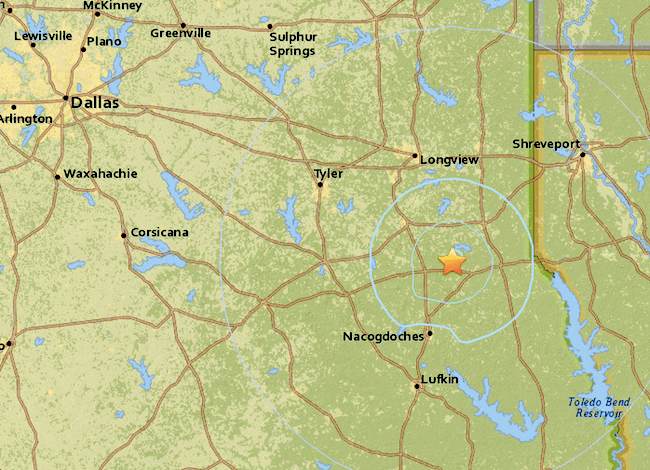
Last week Stanford University researchers added yet another straw to the pile of evidence connecting oil and gas activities to damaging earthquakes. Their new study, published in the journal Science, draws attention to the fact that oil and gas fracking is just one contributor to a more widespread problem.
Fracking and earthquakes
The recent boom in oil and gas fracking has introduced negative impacts into local communities -- spurring residents, environmental organizations, health experts and policymakers to call for tighter regulations.
In some states -- New York and Maryland, for example -- the case against natural gas fracking was strong enough to result in statewide bans. Scores of local communities also initiated fracking bans within their limits, though their authority to do so is often challenged.
However, the focus on fracking in general and natural gas fracking in particular muddies the waters when it comes to earthquakes.
Fracking is short for hydraulic fracturing, an oil and gas drilling method that involves shooting a chemical brine into shale formations. So far, fracking was linked directly to earthquakes only in rare instances.
The much more pervasive problem is the practice of disposing oil and gas wastewater into wells, often at high pressure.
Natural gas fracking contributes tremendous new quantities of wastewater to the disposal stream, but it is not the only source. Some of that wastewater can come from conventional oil and gas drilling operations, and some of it comes from fracked oil wells.
A case in point is Oklahoma. The state is suddenly a global earthquake hotspot due to wastewater disposal, and state officials have finally begun to treat the situation as an emergency.
The bulk of the wastewater, though, is contaminated saltwater from conventional drilling. Fracking wastewater only accounts for about 10 percent of the total statewide.
Texas earthquakes linked to oil and gas wastewater
The practice of disposing wastewater into wells is relatively cheap compared to other options such as treatment and reclamation. The domestic oil and gas industry relies on well disposal to keep costs down, so the new Stanford study could have an impact on conventional drilling as well as fracking operations.
Researchers used a satellite-based sensor called InSAR (short for Interferometric Synthetic Aperture Radar) to chart minuscule changes in the Earth's surface related to a 4.8-magnitude earthquake that occurred near Timpson, Texas, in 2012.
As described by Stanford, four disposal wells began operating near Timpson between 2005 and 2007. The high-volume wells accounted for about 200 millions gallons of wastewater annually.
The researchers matched up disposal records from those wells with the information from InSAR and spotted a pattern linked to the 2012 earthquake.
In addition, the researchers were able to determine a difference based on the depth of the well. The four wells received roughly equal volumes of wastewater, but two of them were relatively shallow. The shallow wells produced a much lesser degree of seismic activity because an insulating layer of rock kept the wastewater from going deeper and migrating into a formation called a crystalline basement.
That's significant because crystalline basements are the faulted rock layers where earthquakes originate.
The deeper wells were a different story:
"... The combination of stiffer rock and the impermeable “blocking formation” above allowed the rising pore pressure to migrate downward and build up until it triggered earthquakes in 2012 along an ancient fault line. The quakes ended in late 2013, when pressures began to decline after wastewater injections were scaled back considerably."
Whither wastewater?
A better understanding of site-specific geological conditions is needed before disposal wells go into operation, the Stanford researchers concluded. But increasing restrictions on disposal wells could cause huge problems for the oil and gas industry.
Oil and gas wastewater consists mainly of brackish water that occurs naturally underground. It comes to the surface as "produced water" during oil and gas operations, so the thinking is that it can simply be replaced back into the ground in another location.
It's more than water, though. Lead researcher William Ellsworth of the Stanford School of Earth, Energy and Environmental Sciences explains:
“You can think of the wastewater as ancient ocean water. It’s too salty and too contaminated with other chemicals to treat economically, so the only viable solution at present is to put it back underground.”
In a recent AP article about the Oklahoma situation, Chad Warmington of the Oklahoma Oil and Gas Association echoed that sentiment:
"These are multimillion-dollar wells in some cases that you can't operate any more, period. If you take away your disposal activity, there's nothing else you can do with that water."
Stay tuned.
Image (screenshot): Shake map near Timpson, Texas courtesy of USGS.

Tina writes frequently for TriplePundit and other websites, with a focus on military, government and corporate sustainability, clean tech research and emerging energy technologies. She is a former Deputy Director of Public Affairs of the New York City Department of Environmental Protection, and author of books and articles on recycling and other conservation themes.














